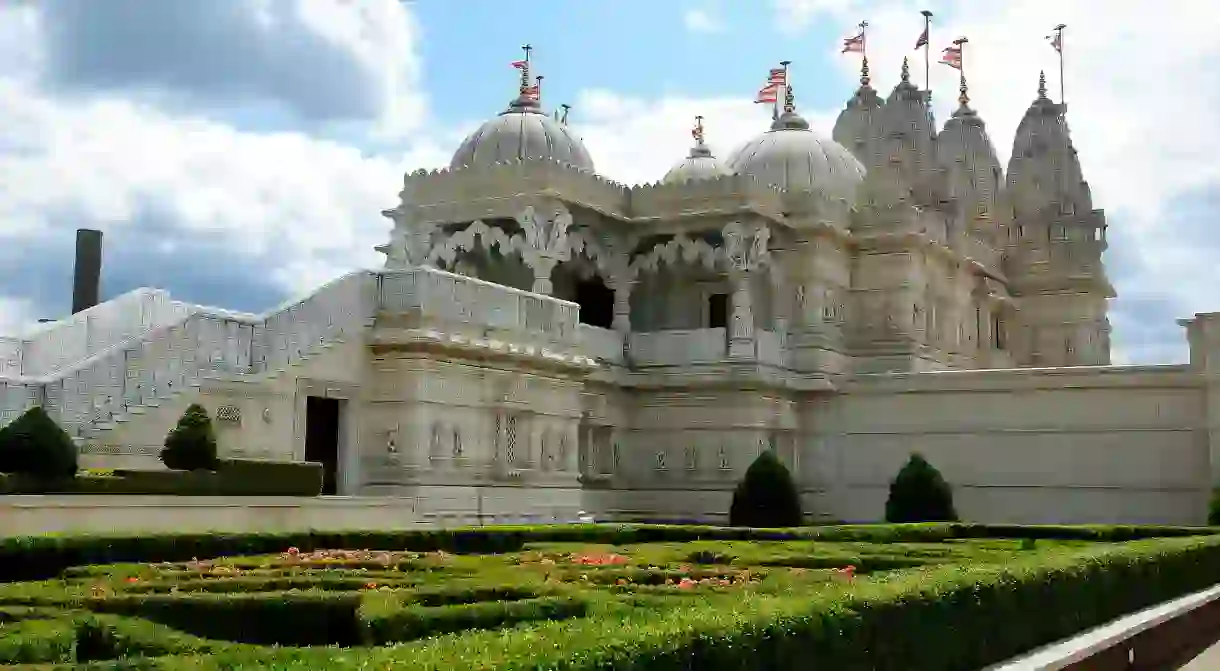History Of The Neasden Temple In 1 Minute

Regarded as Britain’s first authentic Hindu temple and the first traditional stone temple in Europe, the Neasden Temple is a beautiful, opulent place of worship found in the London Borough of Brent. A sanctuary for believers, while open and inviting to all other faiths, it is often touted as one of the best symbols of London’s rich, multi-cultural society.
The Neasden Temple’s full name is the BAPS Shri Swaminarayan Mandir — BAPS being a religious organisation within the branch of Swaminarayan Hinduism.
In 1970, London’s BAPS community aquired a disused church in Islington. After refurbishing the building, it was consecrated by Yogiju Maharaj — a revered monk and spiritual figure in Swaminarayan Hunduism — becoming the first Swaminarayan mandir (temple) in the Western world.
The 1970s, however, would see a large influx of Hindus to the UK, following Idi Amin’s expulsion of Asian communities from Uganda in 1972. The Islington mandir, its congregation rapidly increasing, would prove to be inadequate in size.
In the latter part of the decade, a two-acre site occupied by a defunct factory was found in Neasden. In 1980, a groundbreaking ceremony took place, with a new mandir and assembly hall completed in 1982. However, the community nurtured an ambition to construct a traditional, ornate mandir, something which would require a far larger site.
In 1990, a garage and warehouse site opposite the existing mandir was purchased by the BAPS organisation. Work on the new temple began in August 1992, founded by Pramukh Swami Maharaj, the fifth spiritual guru of BAPS, who died in August of this year.

The new mandir was built using entirely traditional methods; avoiding using modern materials such as steel and iron, it required almost 3,000 tonnes of Bulgarian limestone and 2,000 tonnes of Italian marble. More than 26,000 individually numbered pieces of stone for the main mandir building were sent to a team of 1,500 sculptors in Gujarat, who carved and prepared them, before shipping them back to London to be assembled.
Likewise, a cultural centre adjacent to the mandir, known as the BAPS Shri Swaminarayan Haveli, was constructed using English Oak and Burmese Teak sent to India to be fashioned into intricate and opulent beams, arches, and screens by a team of 150 traditional craftsmen.
The construction of the site required the work of hundreds of volunteers, and was finally completed in 1995, at a cost of £12 million (raised wholly by the community).
It has since been lauded as one of the UK’s most impressive and culturally valuable buildings by a variety of publications and organisations.
📅 The temple is open Monday – Sunday, 9:00am-6:00pm













